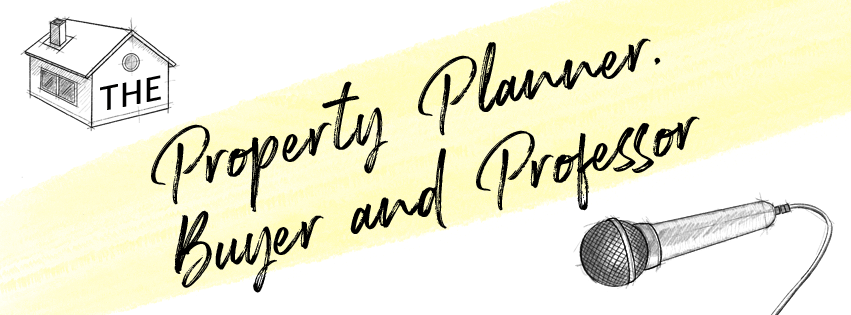
Yep – no footy talk in this episode – it’s all Land to asset ratio and what a ripper of an episode this one is.
In episode 16, the Property Planner, Buyer and Professor dissect the mystery behind “Unpacking land to asset ratio”.
Listen as David Johnston, Cate Bakos and Peter Koulizos, take you through what is it, why it underpins a good investment strategy, and whether there is a perfect ratio!
Listen and subscribe
Apple  Android
Android 
Resources:
- Land to asset ratio
- Why the land-to-asset ratio of a property can determine its future price growth
- How data can help property investors identify gentrification before it happens
- Melbourne suburbs set to transform in the next few years
- Development is sexy – but looks can be deceiving!
- High rise towers – yet another reason to stay away!
- Small time development – How it can work for you, but is it a risk worth taking? (Ep. 11)
- Interpreting data to uncover an outstanding property and location– and how to sort the gold from the lies, damn lies and statistics! (Ep. 8)
- How to succeed with Property and Create your Ideal Lifestyle
- Mortgage Strategy 101 – YouTube video series
- Resi land values down 8 per cent in FY2019
Show notes
- What is land to asset ratio? This is the value of the overall property that is attributed to the land component. For example, if a property is worth $1M and the underlying land value is $700,000, you would have a 70% land to asset ratio.
- Calculating the land to asset ratio is easier said than done. Search for vacant land that has been sold to get the value per square metre or speak with real estate agents. Remember, it is not an exact science!
- The magic number – what land to asset ratio is optimal for investment? It depends on your strategy and goals for the property!
- There is a correlation between high land to asset ratio and low yield. You can get strong rental yield or strong capital growth, but not both!
- Why 95% land to asset ratio is not ideal for an investment – if you have tenants that know their rights, purchasing a rundown dwelling will be the biggest headache.
- How much will an ugly duckling cost you? So, you purchase a fixer upper with a high land to asset ratio – what will the land to asset ratio be on completion of the renovation?
- Why don’t you just purchase a block of vacant land then? Because you won’t be earning any rent, there are no available tax deductions and the banks have different rules in the vacant land game.
- Can you have a land to asset ratio over 100% – absolutely!
- Heritage nightmares – if you’re planning on purchasing a dump to turn into your dream home, make sure you do your research. Costs compound as heritage restrictions are enforced and façade’s need to be maintained.
- And now for a game of ‘would you rather’. Would you rather spend $500,000 on a rundown house or a brand-new apartment? Get out your spreadsheets! The answer is in the numbers.
- Apartments – be warned, if you are chasing a property for tax benefits, you’re probably making a mistake.
- Cash flow money goals – have you run the numbers to see how your purchase will impact your monthly cash flow? If cash flow is tight, then a high land to asset ratio may not be the strategy for you.
- What property spruikers won’t tell you – the property you purchased off the plan will be worth less next year. The story of brand-new property and depreciation.
- What is a new oven worth after you cook a roast in it? If you’re going to buy brand new, you may take a hit when you go to sell it.
- Capital growth – aka growing the big numbers.
- Being the first to own a newly built property – what are the hidden costs you are paying for? It’s not just the materials, but also the margins, skills and labour to build, and don’t forget the developer’s commission.
- Working out the land to asset ratio for apartments – estimate the value of the land that the apartment block sits on and divide by the number of apartments in the block. This is why you’d prefer not to have more than 3 levels of apartments.
- And a final reminder, it’s not the size of the land, but the value of the land.
David Johnston – The Property Planner’s Golden nugget: remember that the land value per square metre can be a key determinant of a high land to asset ratio. It’s not just about the land size. As the land size gets larger, the value per square metre tends to reduce.
Peter Koulizos – The Property Professor’s Golden nugget: the land value is closely correlated to the location, it is not about the size, land that is close to the city is worth a lot more than bigger blocks of land further away.




